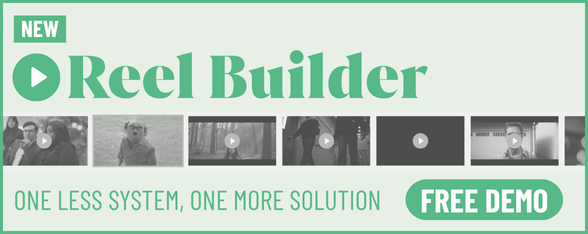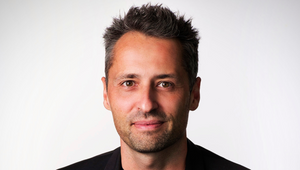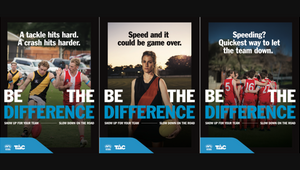
Dentsu’s James Bush: “Quantum Computing and AI Will Drive Personalisation”

James Bush, an industry veteran with over 20 years of experience in creative technology, has carved a remarkable career path spanning startups, agencies, and personal passion projects. Now, as the head of creative technology for Australia and Aotearoa (New Zealand) at Dentsu Creative, he shares insights into pivotal moments that ignited his passion for the field and propelled him into an innovative career.
Speaking to LBB’s Tom Loudon, James delves into projects that blend emerging technologies to craft unique user experiences. He discusses his time at Commonwealth Bank – where human-centred research drove actionable innovation – and imparts valuable lessons from his entrepreneurial ventures. His perspective on the future of creative technology reveals a landscape rich with AI, automation, and IOT-driven possibilities.
LBB> Your career spans over 20 years in the creative technology field. Can you share a pivotal moment or project that fuelled your passion for this field and set you on your career path?
James> I am very fortunate that my career began just as the web started to get good; there was a lot of money around, and digital design was really finding its place. My first job was at a digital agency in London called AMX, where I worked under the guidance of Alasdair Scott and Malcom Garrett. I was given a lot of freedom to experiment with code and to figure things out as I went. I won a D&AD Pencil in my first year - something I didn’t really appreciate the importance of at the time, but on reflection, it was pivotal in that it set a benchmark for craft and pushing boundaries very early on in my career.
LBB> As head of creative technology at Dentsu Creative, you're responsible for designing innovative solutions. Could you provide an example of a recent project where you integrated emerging technologies to create a unique and valuable user experience?
James> A project we are incredibly proud of is Rae, a virtual influencer. We leveraged AI, gaming engines and CGI to create Rae to ensure she could exist beyond a 2D avatar and live in the virtual world. Rae has unlocked technologies from AI, CGI, NFT, blockchain, AR, and VR, operating in virtual worlds, live streams and holograms.
Rae is more than just a virtual model, she has launched NFTs to support STEM education for girls to encourage more of them to study science, technology, engineering, and maths.
The journey of exploration and experimentation continues as brands and retailers reach out for collaboration.
LBB> During your time at Commonwealth Bank, you led the design pillar of the Emerging Technology team. How do you approach the challenge of translating human-centred research into actionable innovation opportunities, and can you share an example of a successful outcome from this approach?
James> The simplest innovation opportunities come from identifying unmet customer needs or pain points. We spent much time researching, using different lenses, be it macro issues such as cost of living or sustainability to data sources, to identify where these opportunities might exist. Our goal was to be able to provide real value and utility to all customers of the bank, not just a select few.
Fuel Finder is a great example of this. We used machine learning and artificial intelligence to learn from customer interactions to drive personalised banking services. Essentially, Fuel Finder checks a customer’s transaction history and predicts when they will next refuel their vehicle. It locates nearby petrol stations offering the best fuel prices and alerts them to the cheapest option in their area via the CommBank app.
LBB> You co-founded Outta Here Social Club, where you built a high-margin business using only 3rd party platforms and services. What were some of the most valuable lessons you learned from this entrepreneurial venture?
James> DTC and retail, in general, is hard. Whilst it is easy to create a product, build the platform and connect the channels, delivering consistent sales takes a lot of time to understand where your customers are, how to reach them and get them to convert. Data can tell you a lot, but talking to your customers is invaluable.
LBB> You founded Twenty One Coffee as a personal passion project. Can you tell us more about this venture and how your expertise in creative technology influenced the brand's development and success?
James> This was a side project that I chose to sit outside the world of creative technology. As someone who spends far too long sitting down in front of a screen, I wanted a creative outlet that was very hands-on. Where I could learn something new, and if it made some money simultaneously, that would be a bonus. Working with brilliant designers and strategists over the years helped inform the brand development, and my technical skills meant I was able to get a website up and running very quickly to be able to sell the products I had made.
LBB> Throughout your career, you've worked in various roles involving product innovation and design thinking. How do you foster a culture of innovation within your teams, and what strategies do you use to encourage creative problem-solving?
James> I’m a big believer in curiosity, diversity of thought and asking for help. My technical background means I’m very curious to understand how things work, which means I ask a lot of questions, and I value the opinions and experiences of others. I’m equally keen to understand what motivates someone to do something and why. Diversity of thought is important, too. Sometimes, that difference of opinion or another perspective is what you need to solve a problem. I’m never shy to try and find a partner or a subject matter expert to try and bring an idea to life. I actively try to foster these actions in any team I work with. I never want anyone to feel they are solely responsible for solving a problem or that an idea belongs to one individual. I particularly enjoy when teams share what inspires them or something they’ve seen that has excited them.
LBB> Having worked internationally in cities like London, how have cultural differences influenced your approach to creative technology, and what have you learned from collaborating with diverse teams worldwide?
James> Collaborating with diverse teams is always a learning opportunity. You learn from each other's experiences and insights. Whilst there might sometimes be small language barriers, you grow as a team by developing trust and cohesion. Talking slowly and listening carefully might sound obvious, but slang and idioms get lost quickly with non-native speakers. Embracing your teammates' cultural differences is a great way to experience another culture but also gain insights into what informs how they think and their values. This links back to the previous question: to collaborate and to learn and grow, you need to be curious, humble, and open to feedback.
LBB> You've been involved with multiple startups and co-founded Streaker. What advice do you have for aspiring entrepreneurs looking to launch their own creative technology ventures?
James> Just start. Be prepared never to stop thinking about work. Never ever compete on price.
LBB> You've also worked in agencies like AnalogFolk and M&C Saatchi as a creative technology director. Could you share a memorable campaign or project from your agency experience that showcased the power of creative technology in marketing?
James> I am very proud to be the co-creator of Clever Buoy for Optus. We used sonar technology to detect sharks and satellite technology to communicate with lifeguards. It turned out to be a dream project, not only from a client perspective but how we worked as a team and how the broader agency supported the work. We worked on Clever Buoy for 18 months. To see our idea and prototype turn into a commercial product and business that floated on the ASX was incredible and is something I aspire to repeat!
LBB> Lastly, how do you see the role of creative technology evolving in the coming years, and what trends or technologies do you believe will have the greatest impact on the industry?
James> We are only just beginning the next wave of technological evolution. Creative technology will become more valuable as the advertising industry moves deeper into data-led ecosystems.
In terms of technologies that will have the greatest impact, AI is already proving to be pivotal in shaping the tools we currently use, and automation will become the norm in all facets of life. Internet Of Things will play a huge role in automation, think beyond watches and smart speakers and look to embedded IOT in vehicles and medical devices to deliver real-time data that informs personalised experiences underpinned by AI. This will all be facilitated by quantum computing to process huge quantities of data and enable simulations that are unimaginable at the moment.














